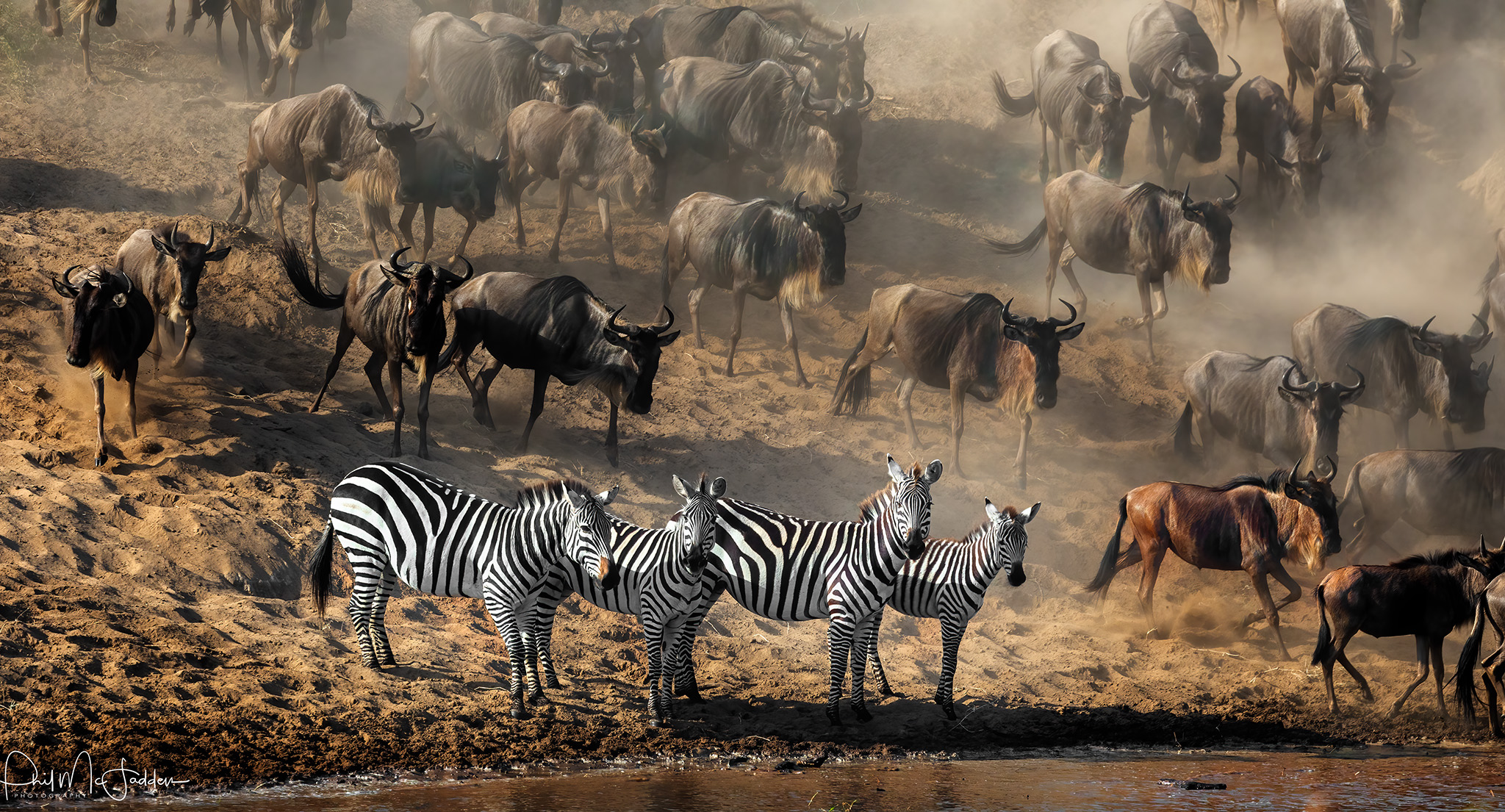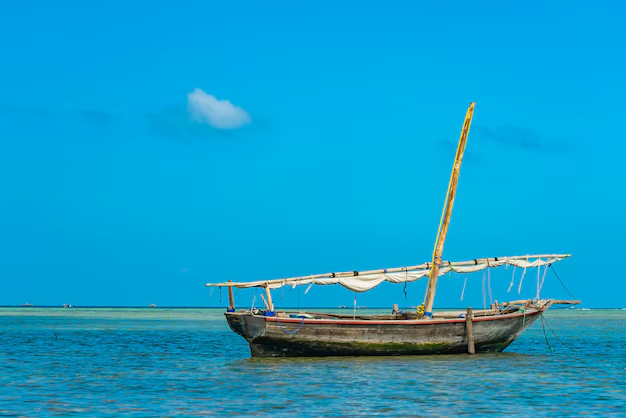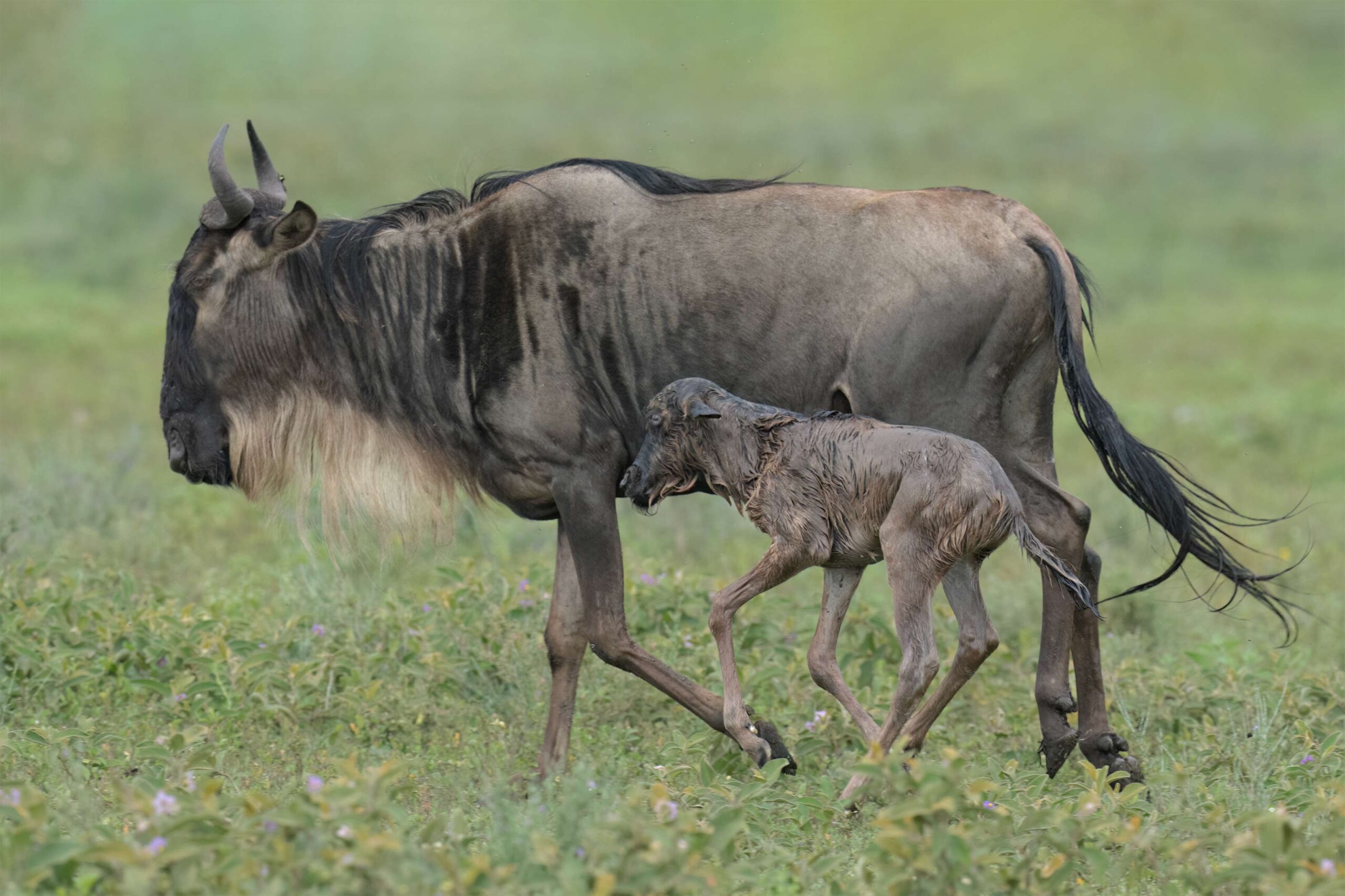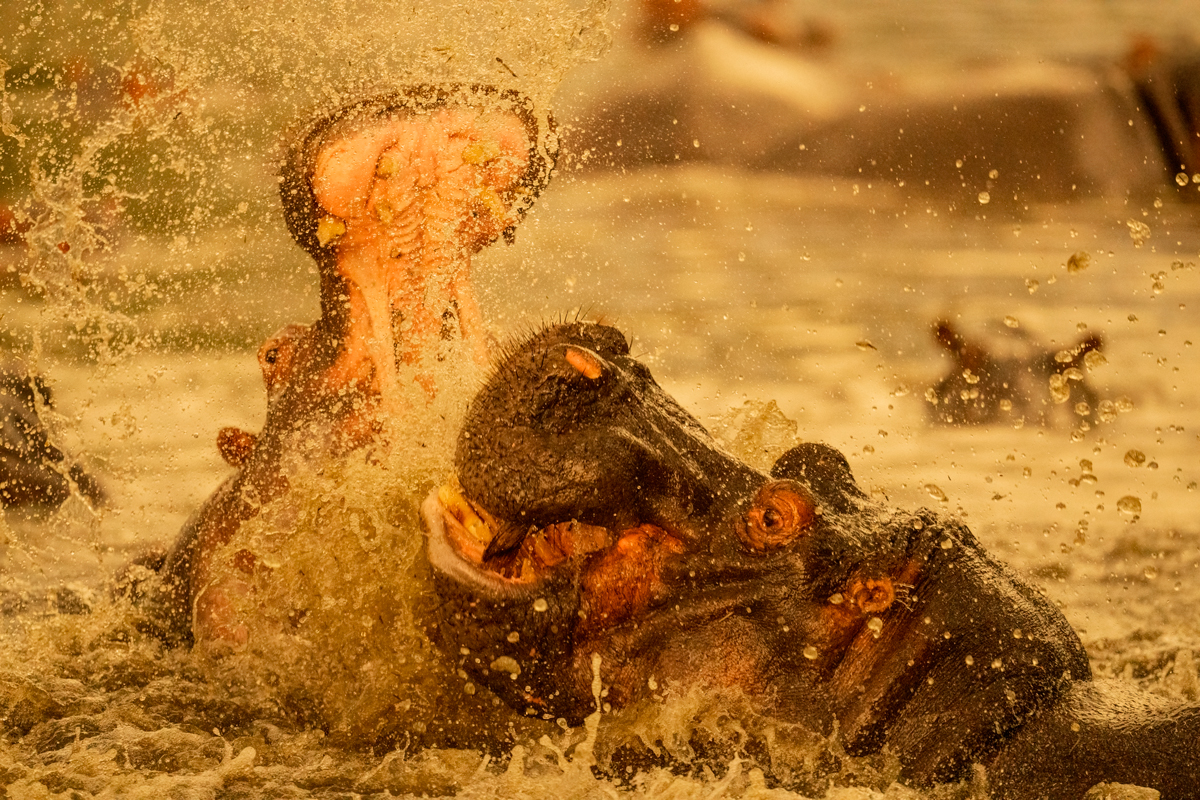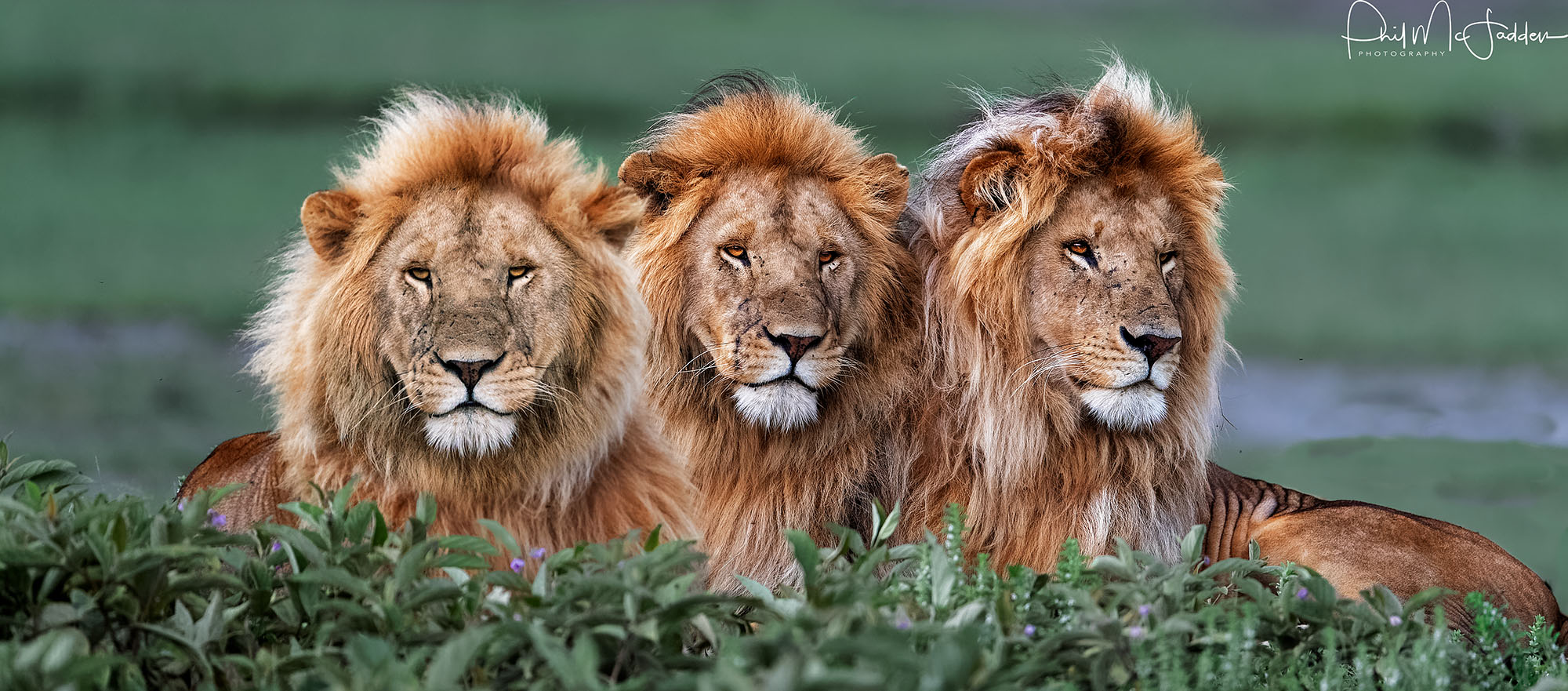The Great Wildebeest Migration
Green Planet Safaris
The Great Wildebeest Migration
The Great Migration is an annual spectacle where over two million wildebeest, along with 20,000 other game animals, journey from Tanzania’s Serengeti National Park to Kenya’s Masai Mara National Reserve. This incredible voyage, spanning over 3,000 kilometers, is driven by the search for fresh grazing pastures and water. The migration follows seasonal patterns, with herds moving north and eventually returning south. Along the way, they face predators like lions and crocodile-infested rivers, making it one of nature’s most dramatic events. This breathtaking phenomenon is a must-see for safari enthusiasts, offering an unparalleled wildlife experience in the heart of Africa.
Plan your SafariRoutes of Migration
The Great Migration follows four major routes. The Southern route stretches between Ndutu in Ngorongoro and south Serengeti, where calving season occurs. The Western route, covering Kirawira and Grumeti, features dramatic river crossings. The Northern route, including Kogatende and the Mara River, is known for its perilous crossings into Kenya’s Masai Mara. Finally, the Eastern route sees the herds return south, completing their annual journey. Each corridor plays a crucial role in this breathtaking wildlife phenomenon, offering unforgettable safari experiences.
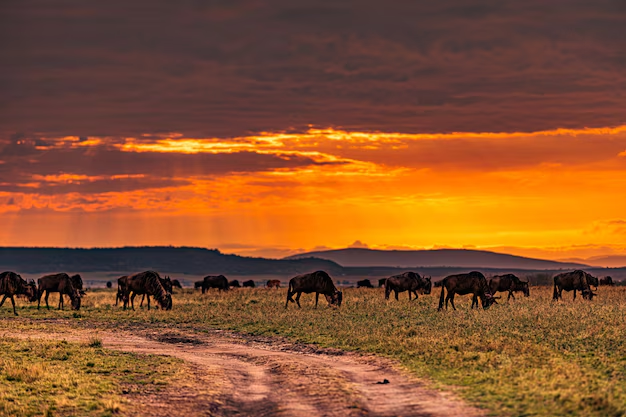
The Calving Season
Each January to March, the Great Migration reaches the nutrient-rich plains of Ndutu and Southern Serengeti, ideal for calving season. Around 400,000 wildebeest calves are born within weeks, attracting predators like lions and cheetahs. This period offers thrilling wildlife encounters, showcasing the delicate balance of life and survival in the wild.
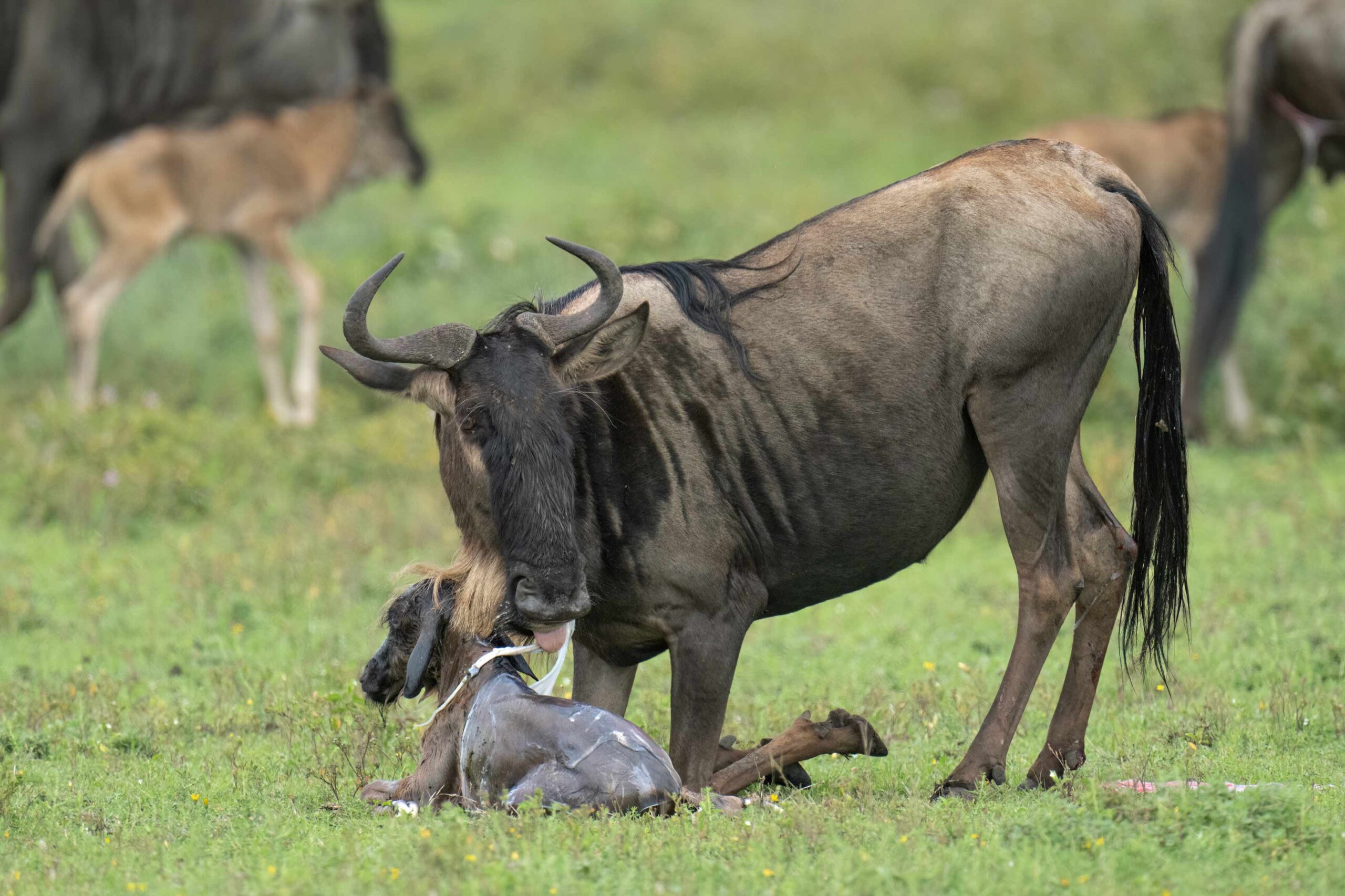
Guaranteed Adventure
witnessing wildebeest calves in the southern is guaranteed.
Unlike unpredictable river crossings, witnessing wildebeest calves in the southern Serengeti is guaranteed. During calving season, hundreds of thousands of newborns fill the plains, making it nearly impossible to miss this incredible spectacle of new life and the predators it attracts.
If you want to witness the incredible calving season, timing is key. The best time to visit is from late January to March when wildebeests give birth in the nutrient-rich plains of Ngorongoro and southern Serengeti. This period also attracts predators, offering dramatic wildlife encounters as big cats take advantage of the abundance of vulnerable newborns.
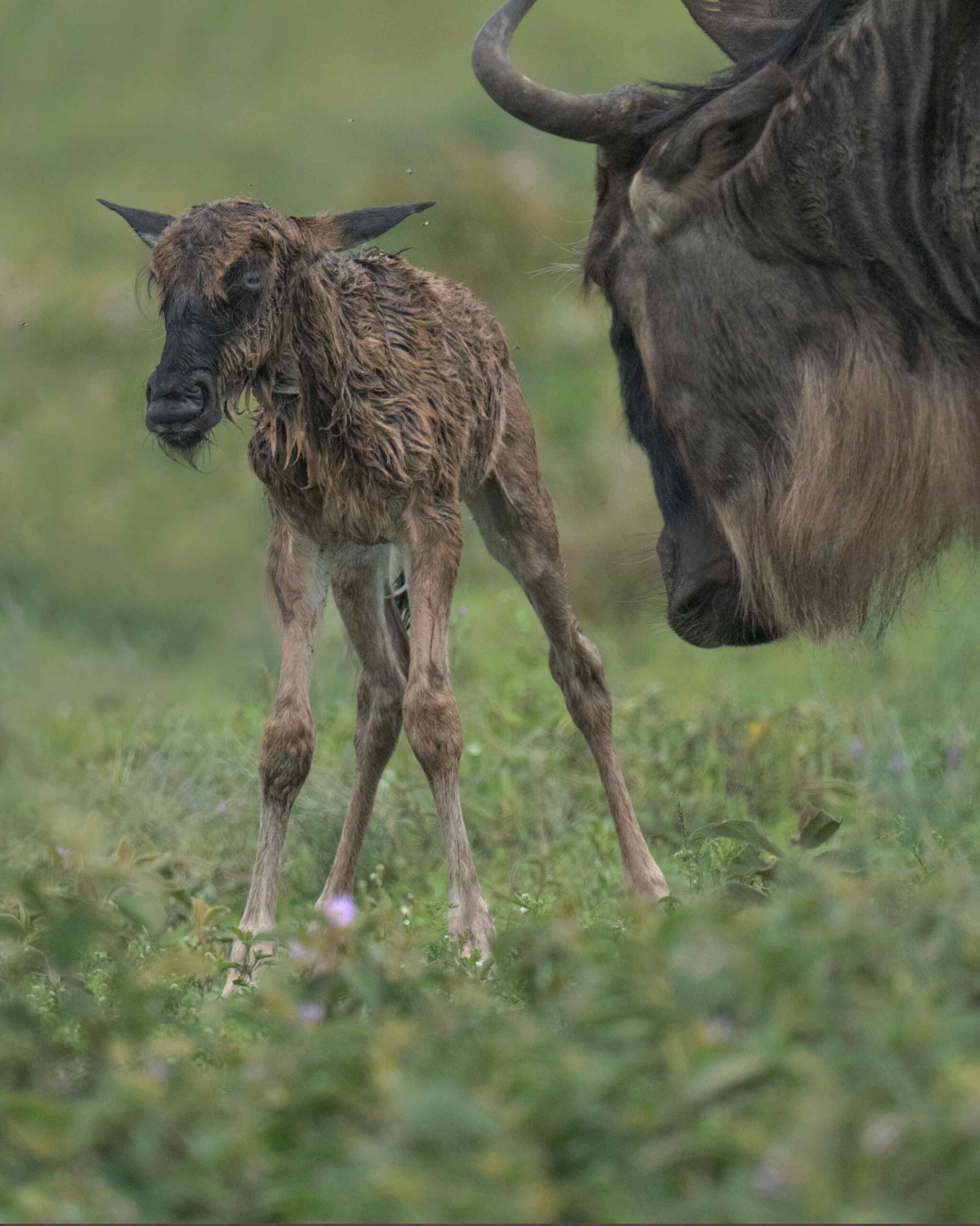
Wildebeest River Crossing
The River Crossing Migration from July to October is a breathtaking spectacle. Thousands of wildebeests plunge into the Mara Rivers, facing crocodiles below and predators on the banks, creating an intense, unforgettable display of survival and nature’s raw power.
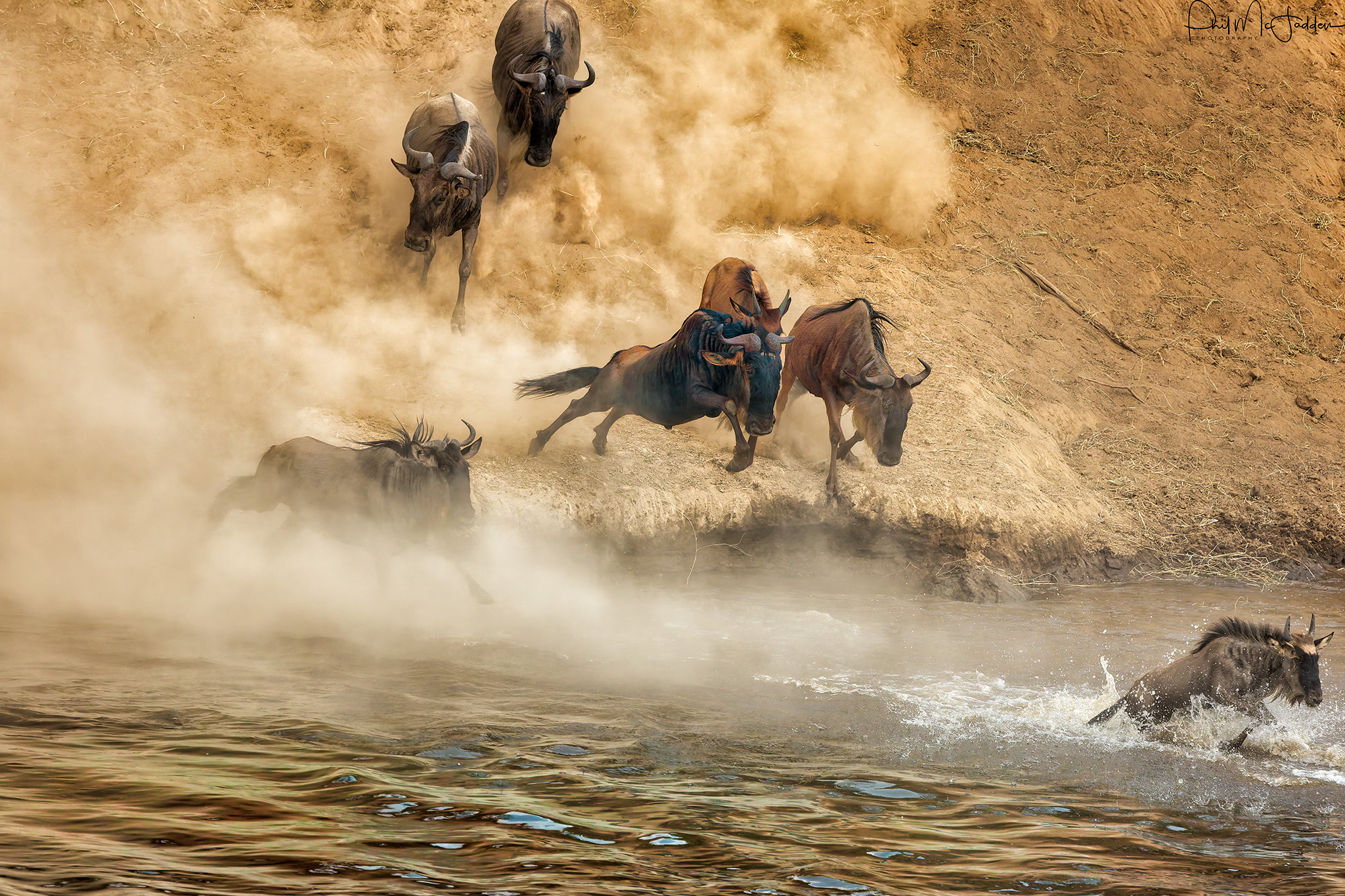
Patience is Key!
River crossings occur annually, but timing is unpredictable as wildebeests choose from many crossing points along the vast river. Patience is key, as herds hesitate, searching for the safest route. This unpredictability adds to the excitement, making each sighting a thrilling and unique safari experience.
